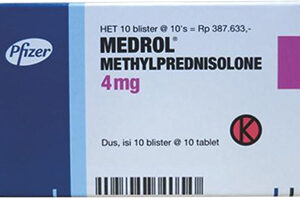Brand Names and Formulation
Bactroban is commercially known as mupirocin calcium cream or ointment. It is formulated primarily as a topical antibiotic agent applied to the skin to treat bacterial infections.
Active Ingredient Overview
The active ingredient in Bactroban is mupirocin, a naturally occurring antibiotic produced by fermentation of the bacterium Pseudomonas fluorescens. It is utilized in a concentration of 2% in its topical preparations.
Pharmacological Action
Mupirocin works by selectively binding to bacterial isoleucyl-tRNA synthetase, an enzyme necessary for the synthesis of bacterial proteins. This action inhibits bacterial protein synthesis, effectively treating and preventing the growth of certain bacteria.
Indications for Use
Bactroban is indicated for the topical treatment of mild to moderate impetigo due to susceptible strains of Staphylococcus aureus and Streptococcus pyogenes. It is also indicated for infected hair follicles (folliculitis), small lacerations, abrasions, and sutured wounds that have become infected with bacteria sensitive to mupirocin.
Dosage and Administration
The ointment should be applied to the affected area up to three times daily for up to 10 days, as directed by a healthcare professional. Only a small quantity should be used, covering the affected area lightly. The treated area may be covered with a sterile bandage, if necessary. Patients should not use the cream for longer than prescribed to prevent the development of resistance.
Uses in Specific Populations
Pregnant women and breastfeeding mothers should use Bactroban only if clearly needed, under the direct supervision of a healthcare provider. Not enough research has been done to determine the full risk profile for these populations. The safety and effectiveness in pediatric patients under the age of 3 months have not been established.
Drug Interactions
There are no known significant drug interactions with topical Bactroban since systemic absorption is minimal. However, concurrently using other topical preparations, especially those that can alter skin barrier function, may theoretically alter its effectiveness or absorption.
Potential Side Effects
Common side effects may include localized skin reactions such as burning, stinging, or itching at the application site. Other reported side effects are rashes, erythema, dryness, and contact dermatitis. Systemic absorption leading to side effects is rare due to minimal systemic exposure with topical application.
Overdose Management
Systemic reactions due to overdose of Bactroban are rare, as it is poorly absorbed through intact skin. In case of accidental ingestion of the product, supportive measures should be taken, and treatment should be symptomatic.
Pharmacokinetics Profile
When used topically, mupirocin is minimally absorbed through the intact skin. Detectable systemic levels are generally below the threshold of quantitation. Following intravenous or oral administration, mupirocin is rapidly metabolized to monic acid, which has no antibacterial activity and is rapidly eliminated by the kidneys.
Storage and Stability
Bactroban cream and ointment should be stored at 20 to 25°C (68 to 77°F) and should not be refrigerated. The product should be kept tightly closed in its original packaging, away from moisture and heat, to maintain stability and avoid degradation of the active substance.
Proper Disposal Instructions
Unused and expired Bactroban should be disposed of properly, away from children and pets. It should not be disposed of through wastewater or household waste. Patients should be instructed to ask their pharmacist how to dispose of medicines no longer required, to help protect the environment.
Regulatory and Legal Status
Bactroban is a prescription medication in many countries and is regulated by the U.S. Food and Drug Administration (FDA), among other health authorities worldwide. It is not available for purchase without a healthcare provider’s prescription.
Monitoring and Follow-Up
Patients should be advised to follow up with their healthcare provider if no improvement in the infection is seen within 3 to 5 days of use, or if the condition worsens. Providers may monitor for signs of local adverse reactions or potential systemic side effects, despite their rare occurrence.
Instructions for Missed Dose
If a dose is missed, patients should apply the ointment as soon as they remember. However, if it is almost time for the next application, the missed dose should be skipped, and the regular application schedule should be resumed. Double doses should be avoided to prevent over-application.







Reviews
There are no reviews yet.